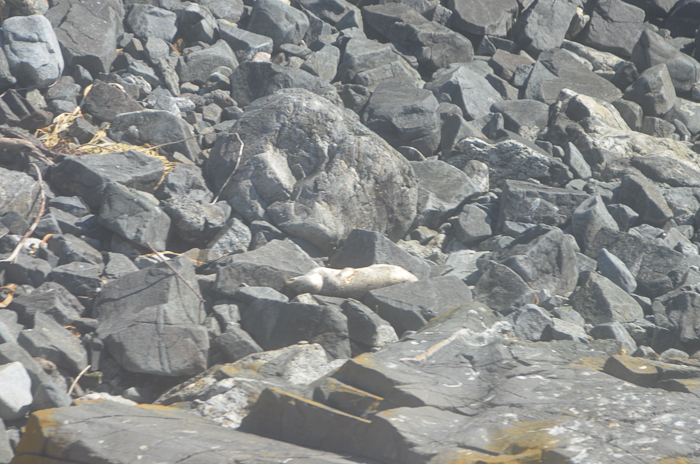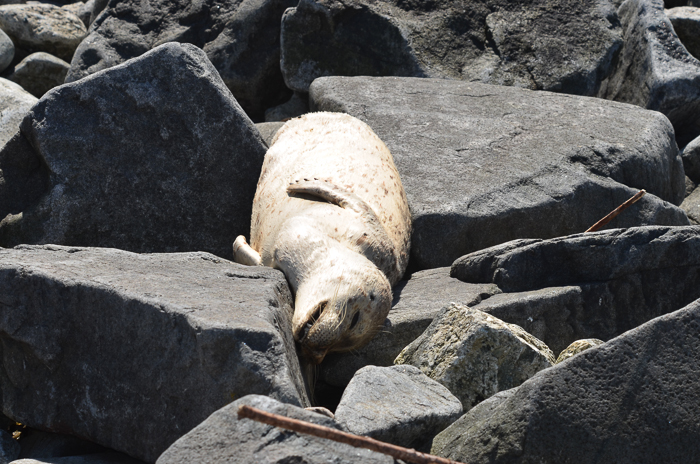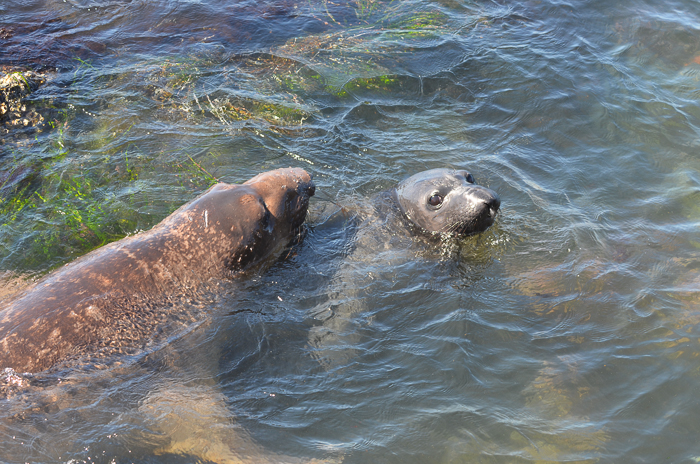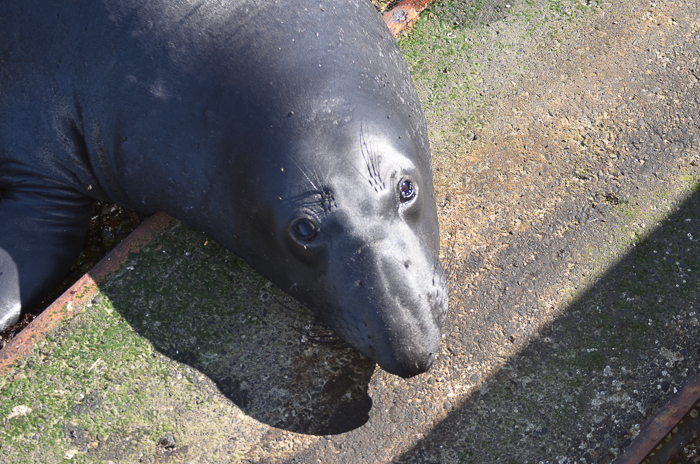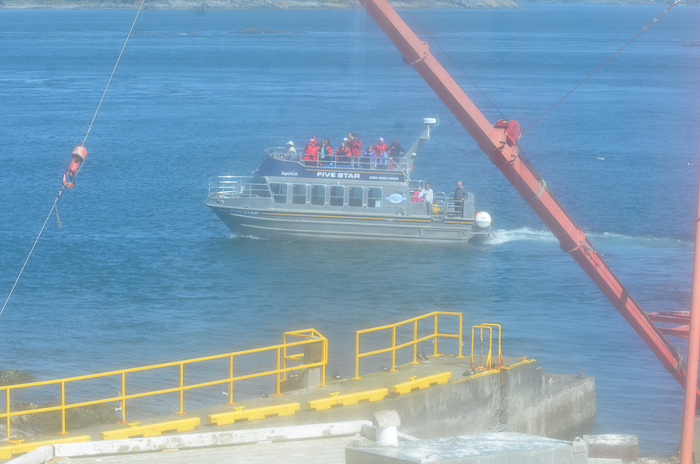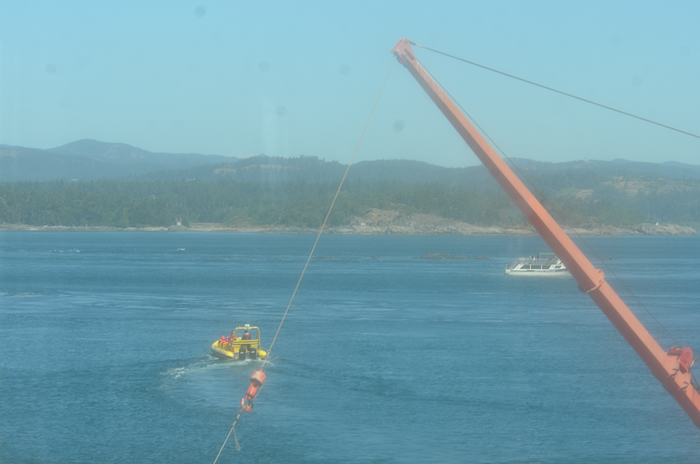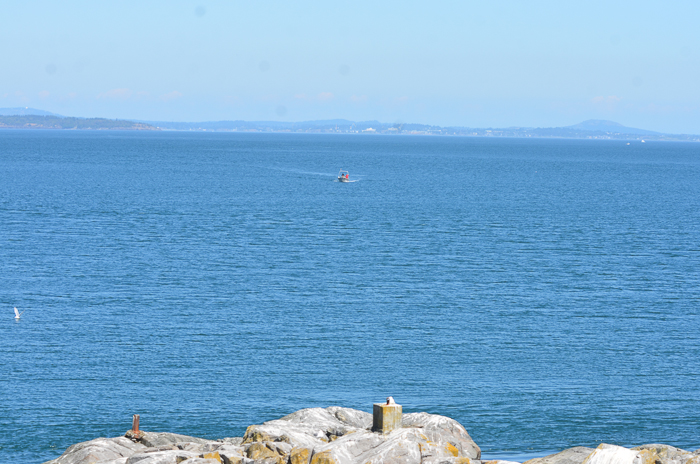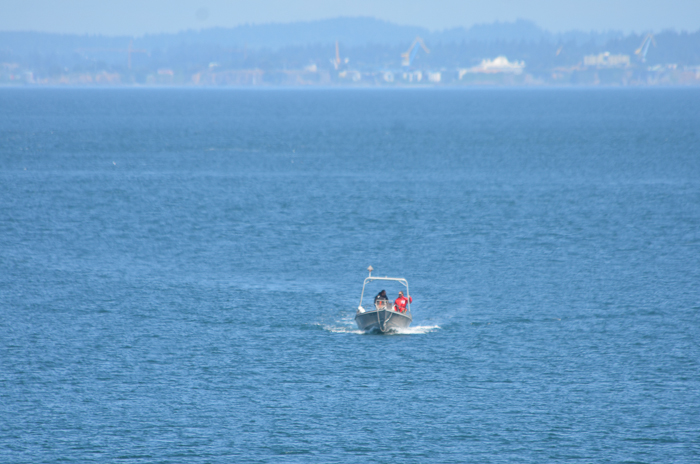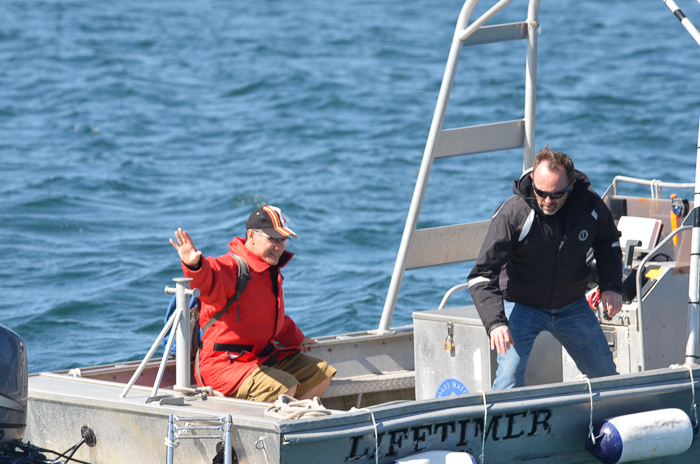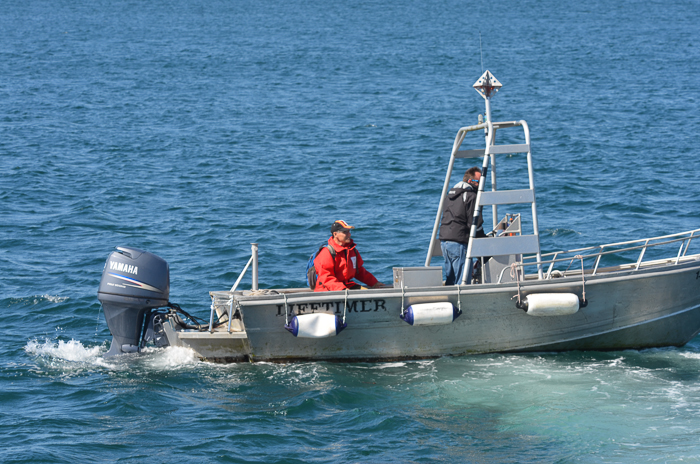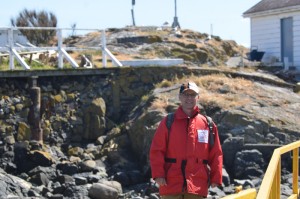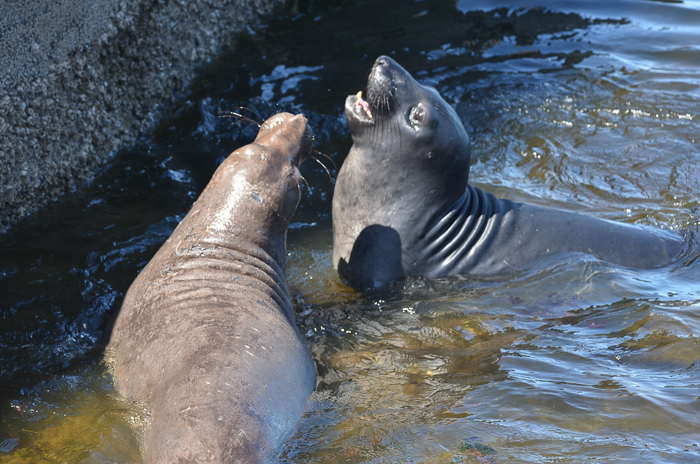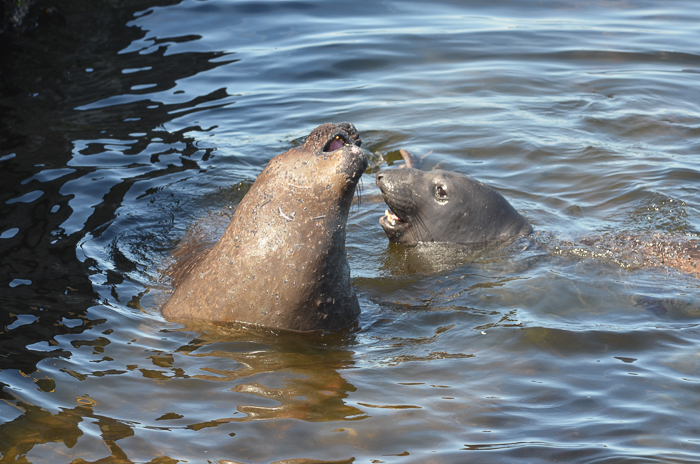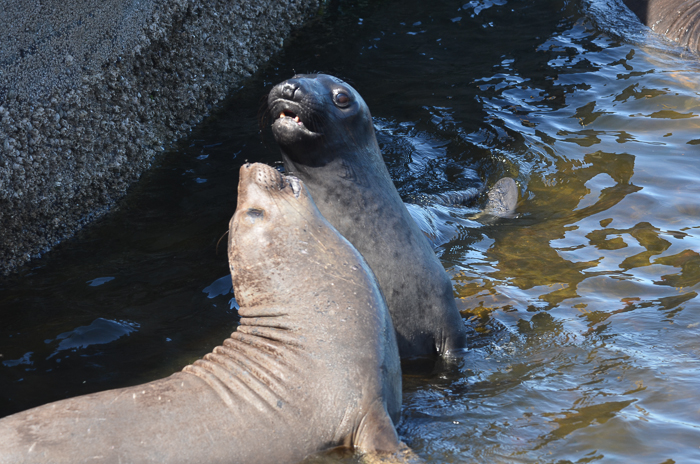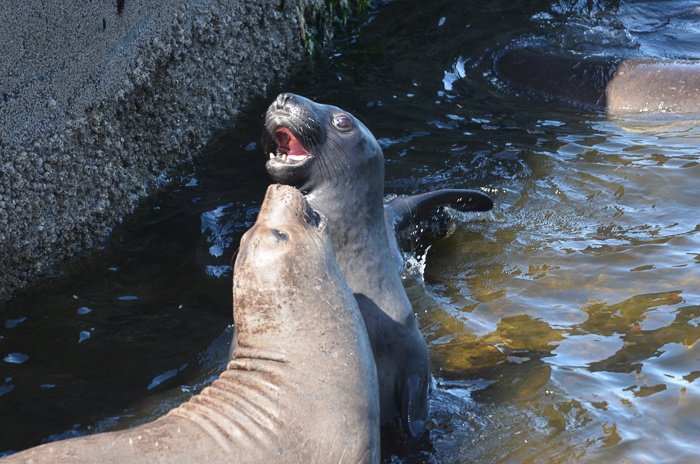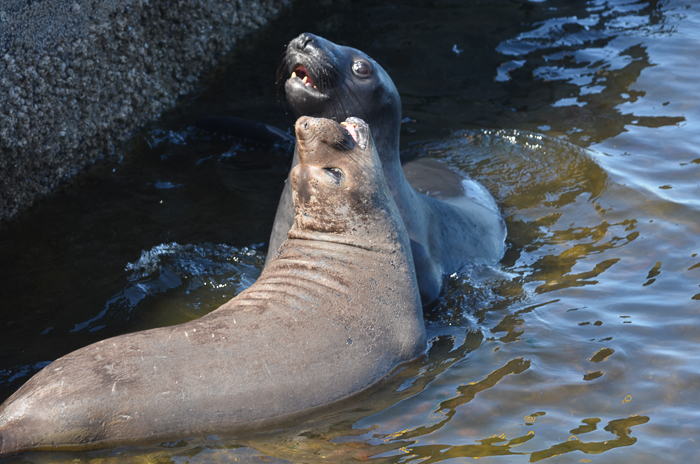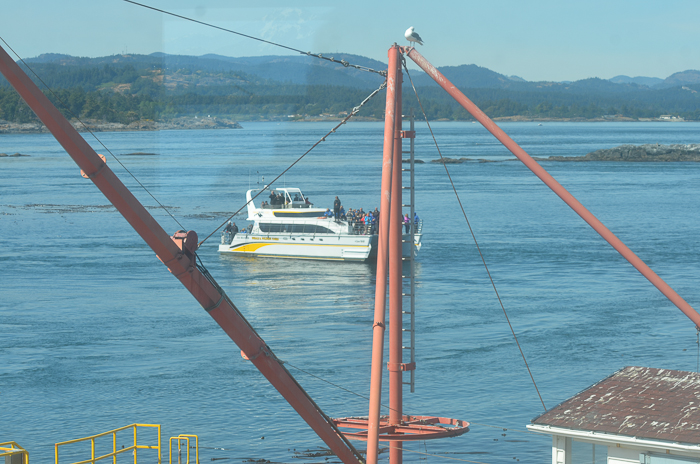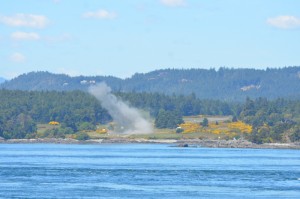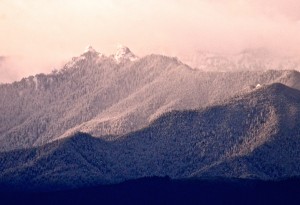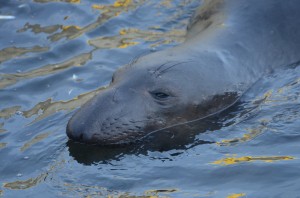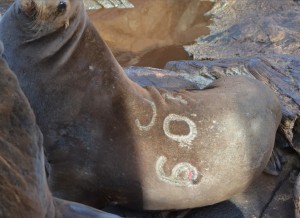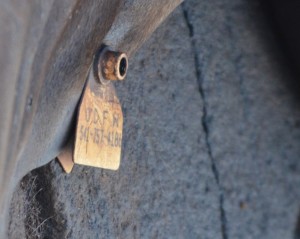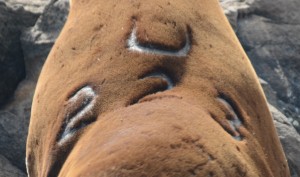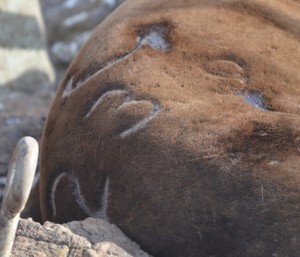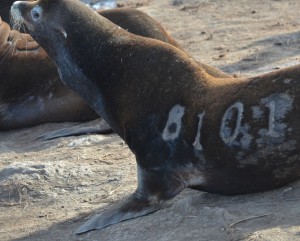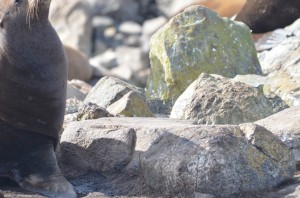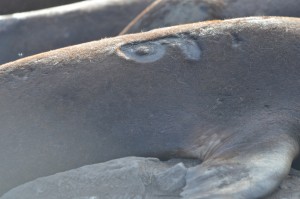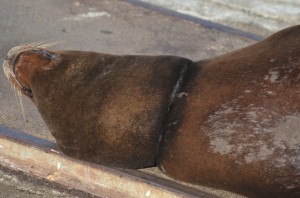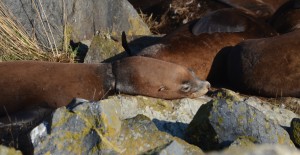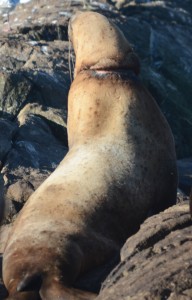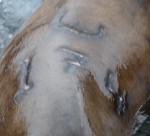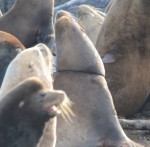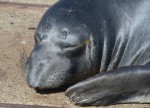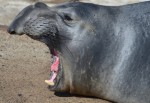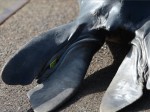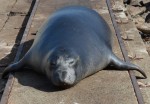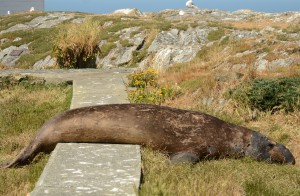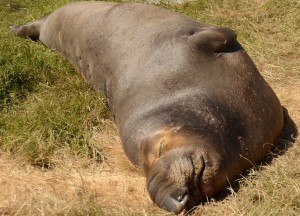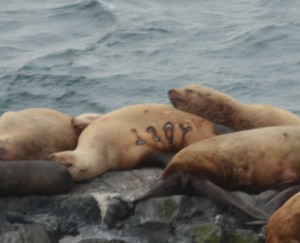The wind blew west 20 – 25 knots until early afternoon on Monday when it slowed, came in from the southwest and cleared out the cold, wet clouds. For the rest of the day, it stayed partially overcast with sunny breaks and the forecasted call for more of the same, with showers was spot on. The dropping barometer leveled out a bit Tuesday and the prediction is for continuing strong westerlies, which blew all day 10 – 20 knots. Wednesday looks like a wet one.
Monday morning was blustery and bristling with police and military activity on the water, all around but not in the Ecological Reserve. Only two whale watching boats were noted in Reserve on Monday.Tuesday only one whale watching vessel was noted in Reserve. There was a Pedder Bay rental with independent researchers counting seals and sealions. Tuesday, Second Nature arrived with a large contingent of support staff, maintenance, IT and volunteers. Tuesday was punctuated by military blasting.
The elephant seals were on the move today and yesterday. After a dawn swim, Monday, only half the animals moved back behind the boathouse, where most of them have been sleeping for the last couple of weeks. The grass where they were lying, behind the boat house, is a fried brown colour. Although it looks dead, it will probably come back after a couple of weeks like the other crushed and cooked parts.
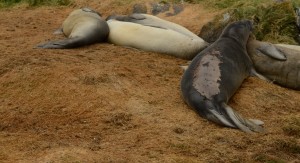
Elephant Seal lawn treatment results.
Seven animals, including two females who started the move, found fresh, green grass right outside my basement door. Tuesday was a repeat performance except that we were also graced by the presence of a very large male. It was a short visit and I was too busy to measure him but he was massive.
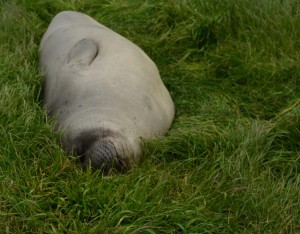
This before the lawn treatment, the previous photo is after.
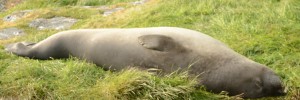
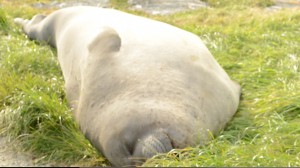
This big boy is luxuriating in the nice green grass.
There were at total of 17 Northern Elephant Seals on Great Race Monday and at least two individuals here Sunday that were gone Monday. My guess is that there is exchange with the group hauling out on Middle Rocks and that was reinforced by the big visitor here today.
California Sealions started hauling out on the jetty today.
Some the gull pairs are getting quite good at their acrobatic feats of reproduction which involve the male standing, balanced on the females back.
Chores were minimized Monday due to an injury. There were no visitors Monday and six staff/volunteers Tuesday. The men moved a tidy tank across the island, Max fixed camera 5 and did some trouble-shooting and Courtney started training Guy.

